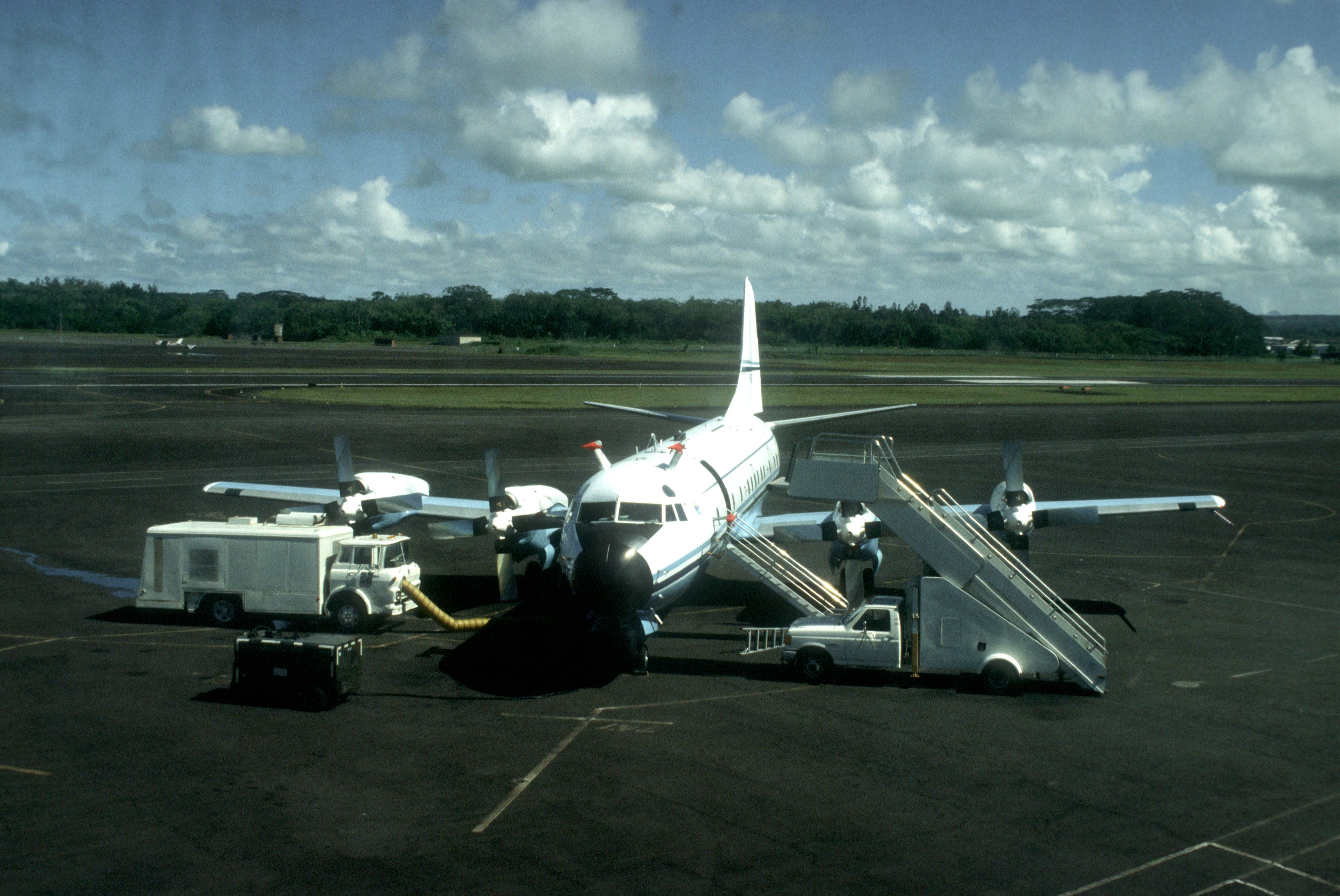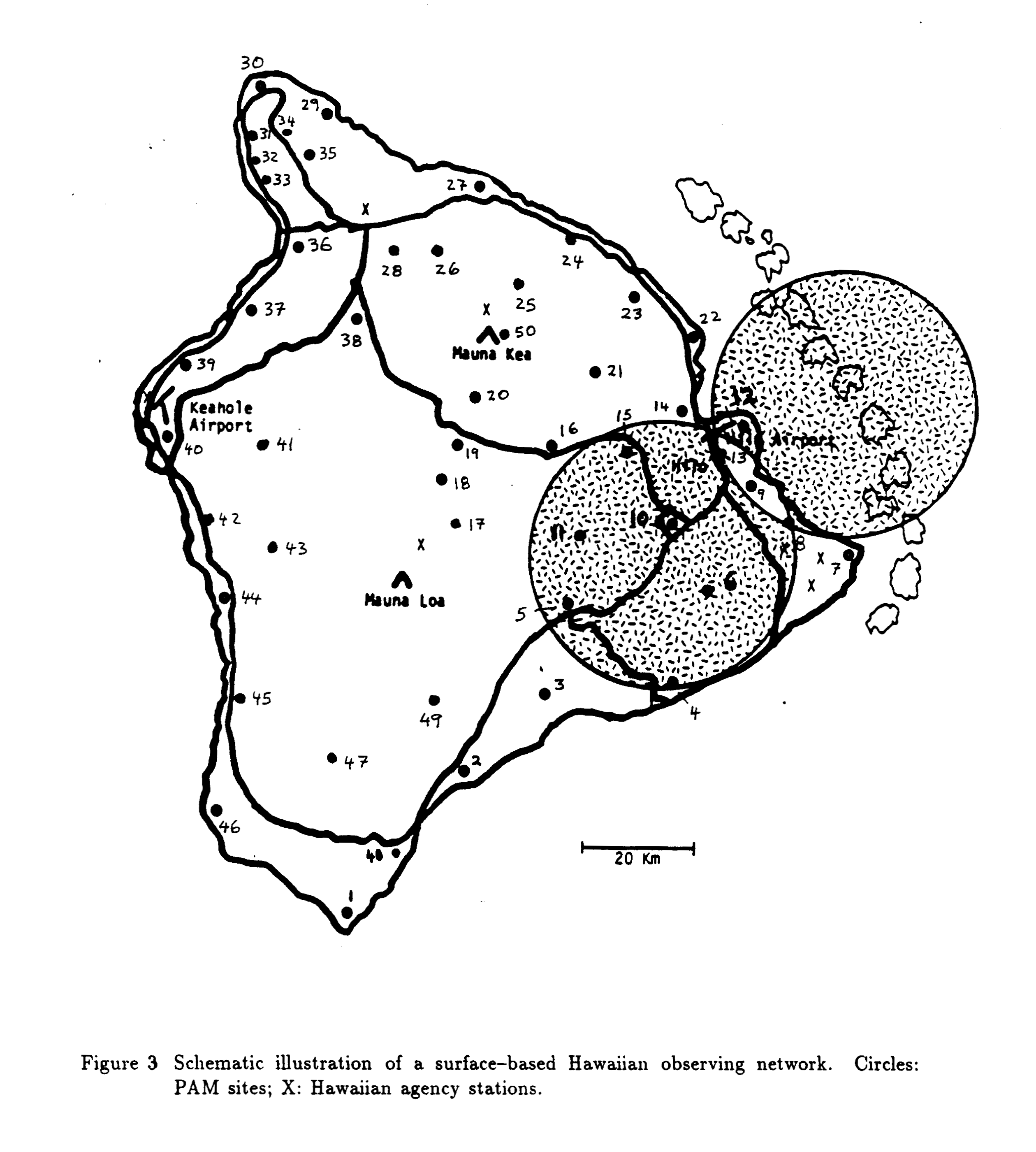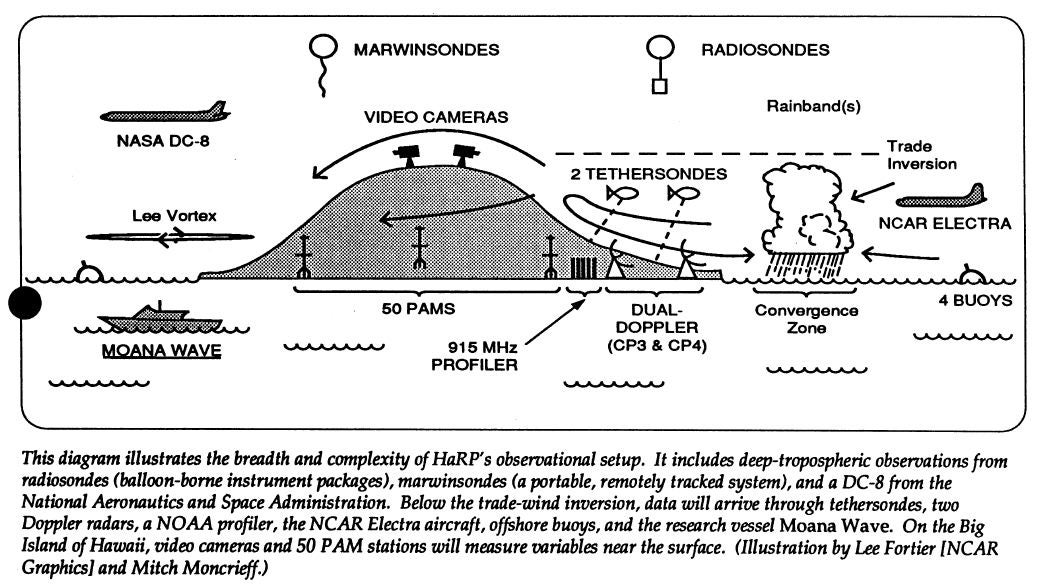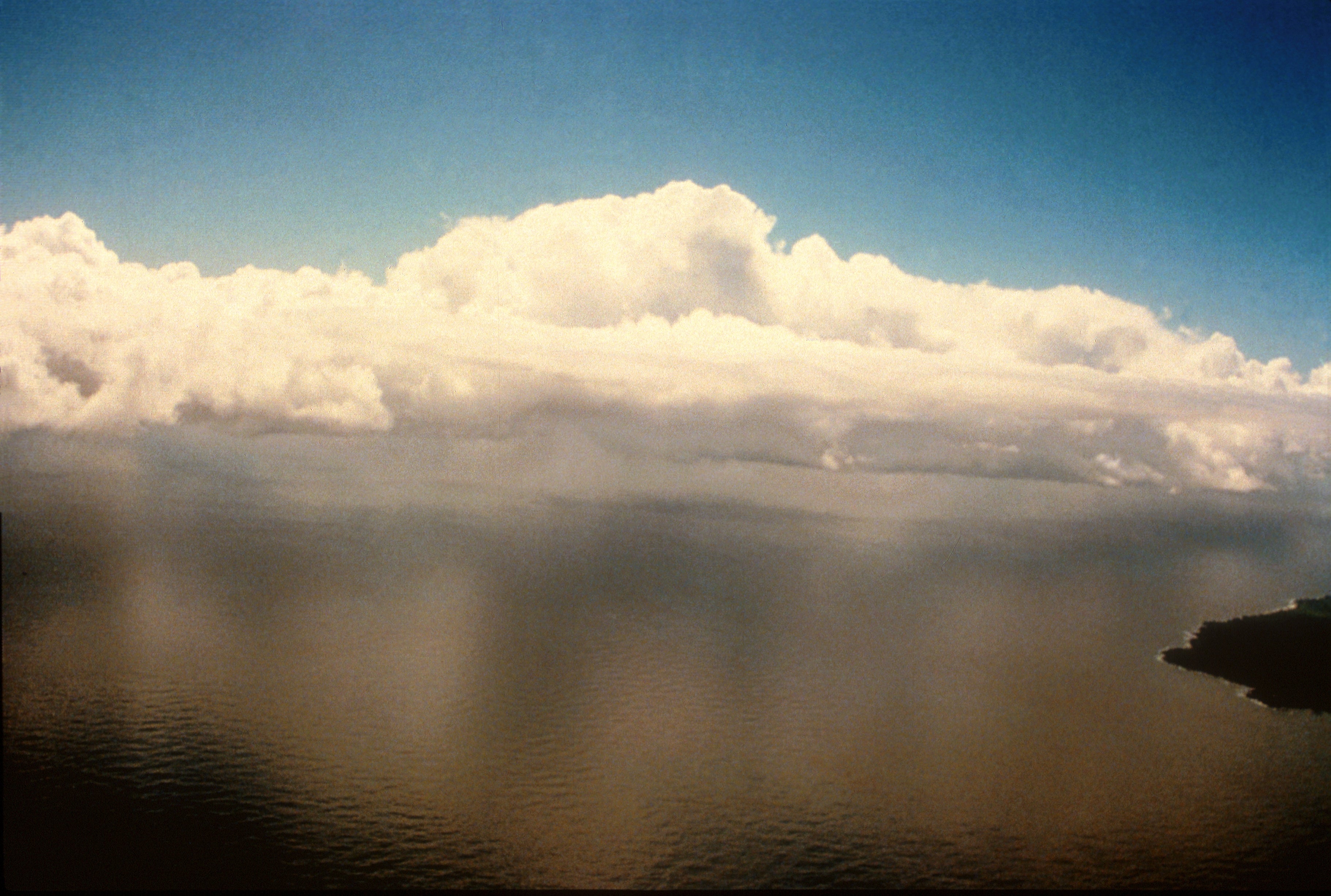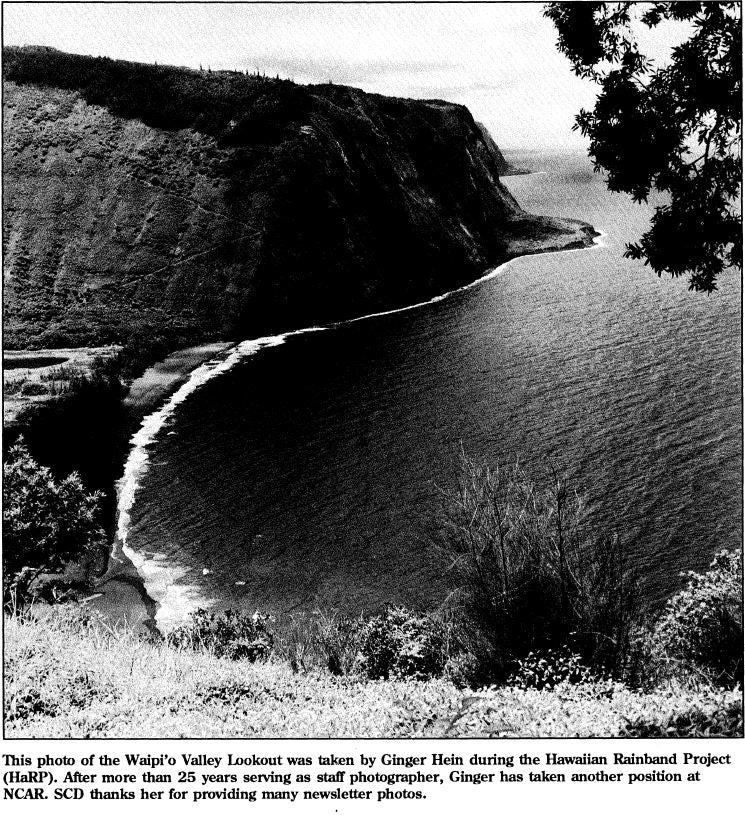HARP1990
Hawaiian Rainband Experiment
The focus of the HaRP was on rainbands, lines of cumulus convection that form upwind of the Big Island of Hawaii and are capable of producing intense Rainfall. A central objective was to document and understand the structure of these rainbands via study of the dynamical and microphysical processes that interact to force the circulations.
(Click for Full Resolution)
Science Objectives
The predictability and isolation of meteorological events in Hawaii provided a unique opportunity to study several important processes that are archetypes of more complex phenonema. These included:
- The interaction of processes on island (mesoscale) and rainband scale, particularly the initiation of convection by the upstream effect of the island. Convection initiated by the forcing of complex orography is a special aspect of predictability.
- The dynamics of the rainbands and their interactions with the convection cells. The stronger rainbands and embedded cells have a structure and behavior that may be similar to more energetic and complex squall lines. The interaction of such phenomena with the mean flow, especially the momentum transport, is a fundamental problem that is only beginning to be studies in depth.
- The interaction of cloud dynamics and microphysics. This is an issue that has confounded the cloud physics community for decades. The absence of an ice phase in Hawaiian convection, the high water mixing ratio and large associated latent heat, and the heavy rainfall rates will expedite this type of study.
- The mechanisms responsible for lee vortices and the relative roles of inviscid, zero potential vorticity and potential vorticity generating processes.
(Click for Full Resolution)
Project Operations
HaRP was conducted from Hilo, Hawaii, from 16 July to 25 August, 1990. The project incorporated two 5-cm Doppler radars, an instrumented Electra aircraft, about 50 surface observing stations, soundings, and other ancillary facilities. It also exploited numerical simulations, which helped to focus the research objectives and established testable hypotheses.
(Click for Full Resolution)
|
During summertime in Hawaii, vigorous rainbands form almost every morning, created by the collision of trade winds with cooler nighttime air descending from Hawaiian mountains. Photo courtesy Al Cooper.
|
Waipi'o Valley. Photo courtesy Ginger Hein.
|
All photos copyright University Corporation for Atmospheric Research unless otherwise noted.
